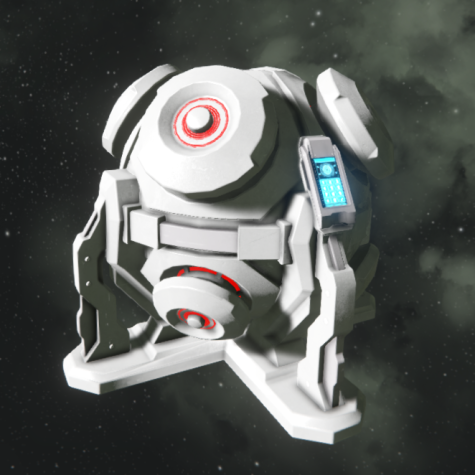Spherical Gravity Generator


Gravity block information is listed in the table down below.
| Components | Required |
| Steel Plate | 40 |
| Functional | |
| Computer | 40 |
| Hack | |
| Motor | 6 |
| Large Steel Tube | 4 |
| Steel Plate | 56 |
| Construction Component | 60 |
| Gravity Generator Components | 6 |
| Steel Plate | 54 |
| Info | |
| Dimensions (W,H,L) | 1,1,1 |
| Mass | 8,532 kg |
| Integrity | 20,320 |
| Build Time | 50 s |
| Max Radius | 400m |
| Max Gravity Acceleration | 9.81 m/s² |
| Power Consumer Group | Utility |
| Is Airtight | No |
| PCU Cost | 200 |
| Components | Required |
| Steel Plate | |
| Functional | |
| Computer | |
| Hack | |
| Motor | |
| Large Steel Tube | |
| Steel Plate | |
| Construction Component | |
| Gravity Generator Components | |
| Steel Plate | |
| Info | |
| Dimensions (W,H,L) | |
| Mass | |
| Integrity | |
| Build Time | |
| Max Radius | |
| Max Gravity Acceleration | |
| Power Consumer Group | |
| Is Airtight | |
| PCU Cost | |
Overview
Operating the same way as a Gravity Generator in which it pushes/pulls small objects, and players towards a specific direction. However, the spherical gravity generator differs in that it pulls or pushes objects in a sphere-like radius around itself.
Usage
The gravitational acceleration can be configured using a slider, with possible values being between -1G and 1G. By adjusting the depth, height, and width sliders accordingly, the shape of the gravitational field can be altered to be any variation of a rectangular prism, whether cubic, flat, tall, wide, narrow, short, or long.
Note that the larger the effective volume of the gravitational field and the acceleration force, the more power consumption the gravity generator will use. Considerable energy can be saved over time by carefully placing the gravity generator in a more central location and then adjusting the field to affect a smaller area. This is particularly important to note in Survival Mode, where considerable amounts of uranium can be saved simply through proper placement and careful use.
Terminal
Artificial Gravity can also be configured to affect the radius and strength of the spherical gravitational field.
- Radius – The radius of the sphere around the generator, from 10 m to 400 m (default 150 m).
- Acceleration – How much applied gravitational force the generator applies (default 9.81 m/s2). Setting this field to negative will reverse the field to push things away.
Power requirements
Power requirements scale linearly based on both radius and acceleration. 1.6 MW are required to run at full strength and range (400 m and positive or negative 9.81 m/s2 acceleration). Reducing range to 200m reduces power consumption to 0.8 MW. Reducing acceleration to positive or negative 4.905 m/s2 has the same effect on power consumption.
Effectiveness in Natural Gravity
Planets and Moons by default have their natural gravitational fields. While it is possible to use gravity generators in the presence of Natural Gravity, its effectiveness diminishes the higher the natural gravitational force is. It reaches to a point where Artificial Gravity has no measurable/noticeable effect.
